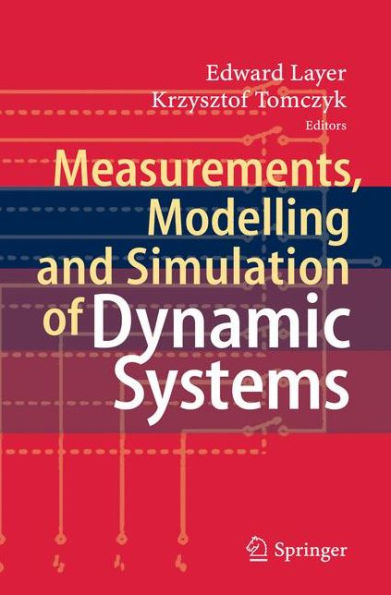Measurements, Modelling and Simulation of Dynamic Systems
The development and use of models of various objects is becoming a more common practice in recent days. This is due to the ease with which models can be developed and examined through the use of computers and appropriate software. Of those two, the former - high-speed computers - are easily accessible nowadays, and the latter - existing programs - are being updated almost continuously, and at the same time new powerful software is being developed. Usually a model represents correlations between some processes and their interactions, with better or worse quality of representation. It details and characterizes a part of the real world taking into account a structure of phenomena, as well as quantitative and qualitative relations. There are a great variety of models. Modelling is carried out in many diverse fields. All types of natural phenomena in the area of biology, ecology and medicine are possible subjects for modelling. Models stand for and represent technical objects in physics, chemistry, engineering, social events and behaviours in sociology, financial matters, investments and sk markets in economy, strategy and tactics, defence, security and safety in military fields. There is one common point for all models. We expect them to fulfil the validity of prediction. It means that through the analysis of models it is possible to predict phenomena, which may occur in a fragment of the real world represented by a given model. We also expect to be able to predict future reactions to signals from the outside world.
1101509926
Measurements, Modelling and Simulation of Dynamic Systems
The development and use of models of various objects is becoming a more common practice in recent days. This is due to the ease with which models can be developed and examined through the use of computers and appropriate software. Of those two, the former - high-speed computers - are easily accessible nowadays, and the latter - existing programs - are being updated almost continuously, and at the same time new powerful software is being developed. Usually a model represents correlations between some processes and their interactions, with better or worse quality of representation. It details and characterizes a part of the real world taking into account a structure of phenomena, as well as quantitative and qualitative relations. There are a great variety of models. Modelling is carried out in many diverse fields. All types of natural phenomena in the area of biology, ecology and medicine are possible subjects for modelling. Models stand for and represent technical objects in physics, chemistry, engineering, social events and behaviours in sociology, financial matters, investments and sk markets in economy, strategy and tactics, defence, security and safety in military fields. There is one common point for all models. We expect them to fulfil the validity of prediction. It means that through the analysis of models it is possible to predict phenomena, which may occur in a fragment of the real world represented by a given model. We also expect to be able to predict future reactions to signals from the outside world.
169.0
In Stock
5
1

Measurements, Modelling and Simulation of Dynamic Systems
156
Measurements, Modelling and Simulation of Dynamic Systems
156Hardcover(2010)
$169.00
169.0
In Stock

Product Details
| ISBN-13: | 9783642045875 |
|---|---|
| Publisher: | Springer Berlin Heidelberg |
| Publication date: | 01/15/2010 |
| Edition description: | 2010 |
| Pages: | 156 |
| Product dimensions: | 6.40(w) x 9.30(h) x 0.80(d) |
From the B&N Reads Blog
